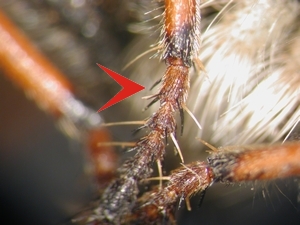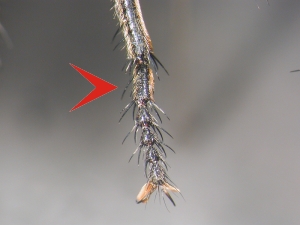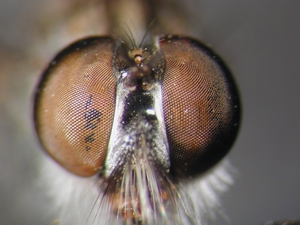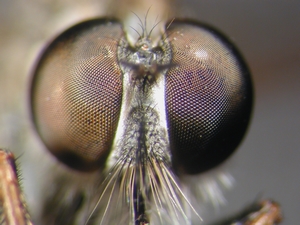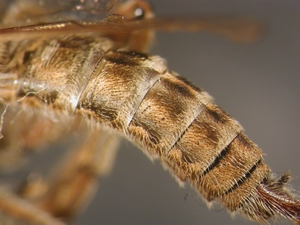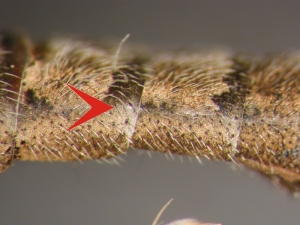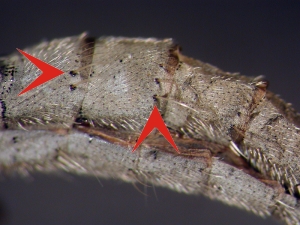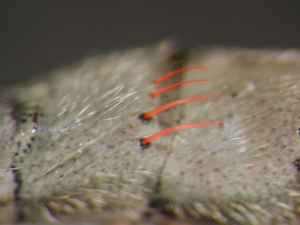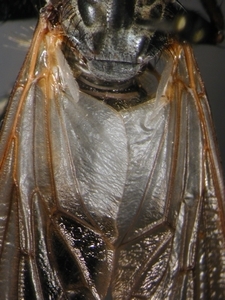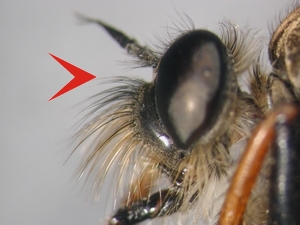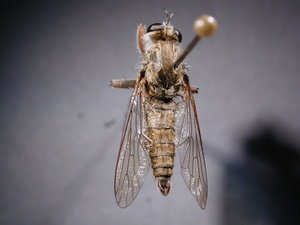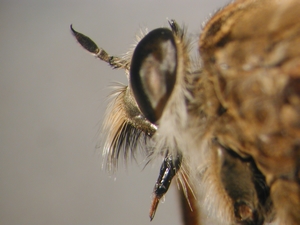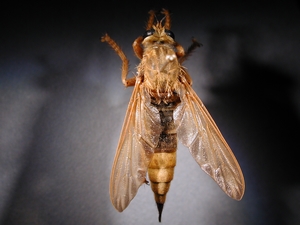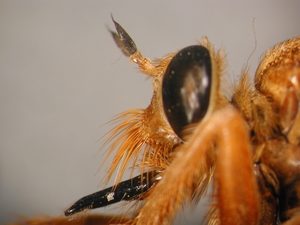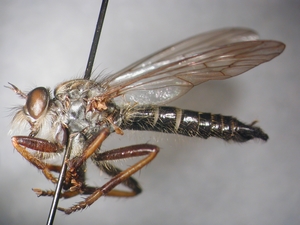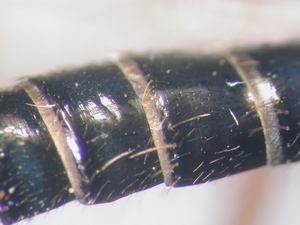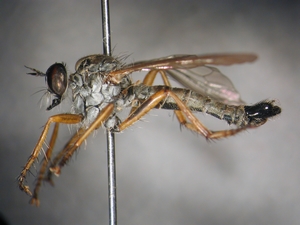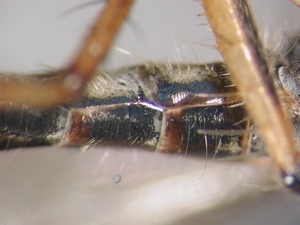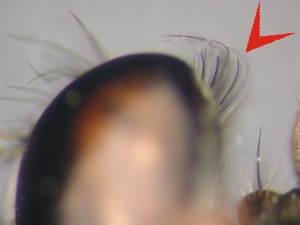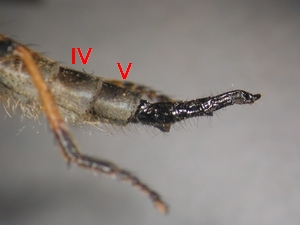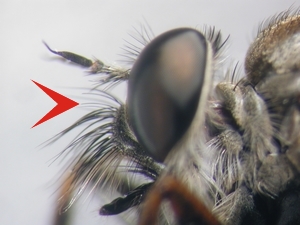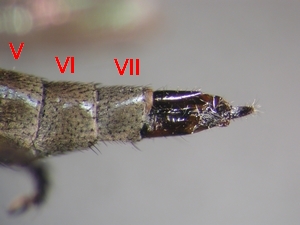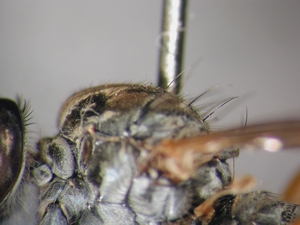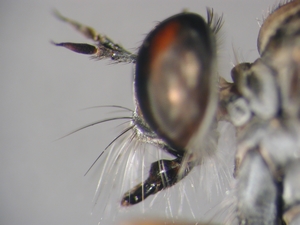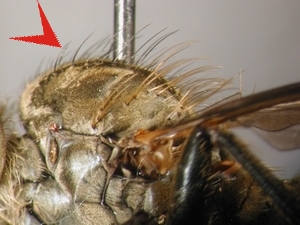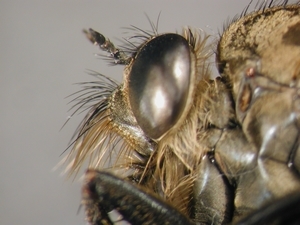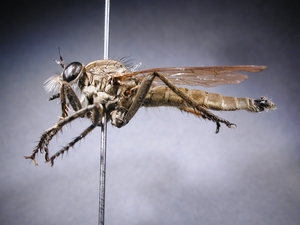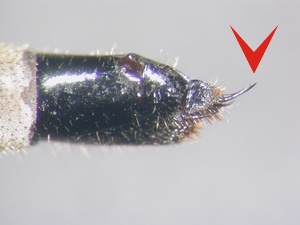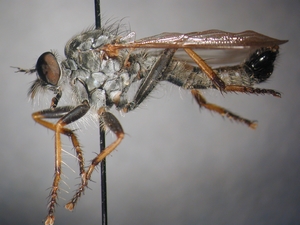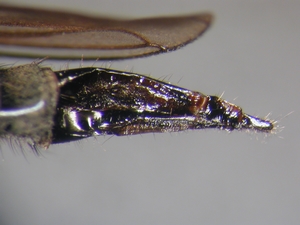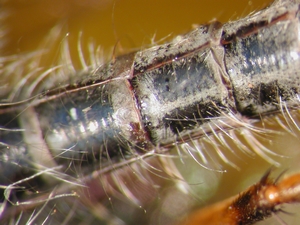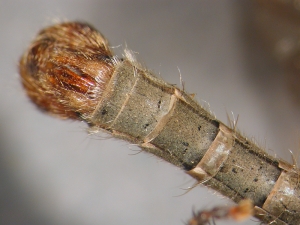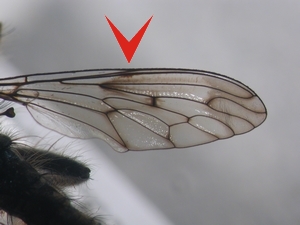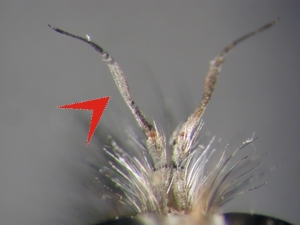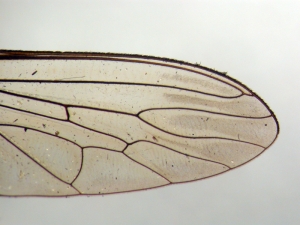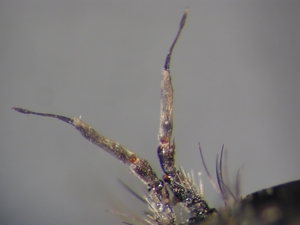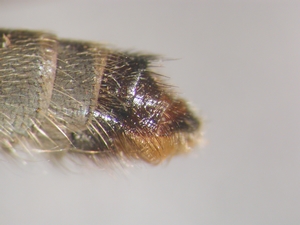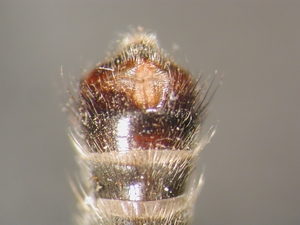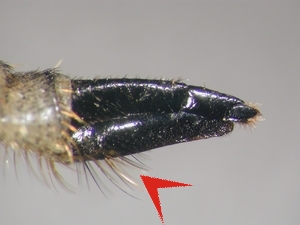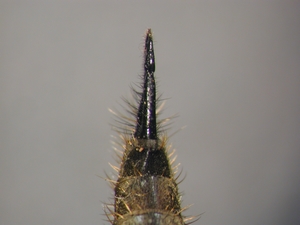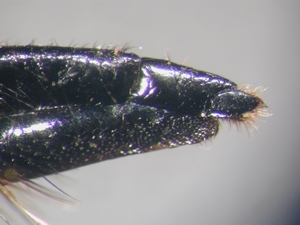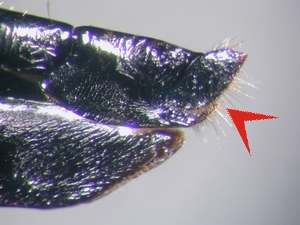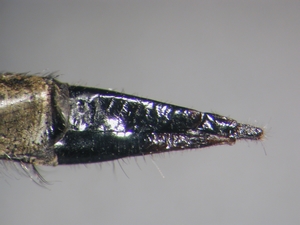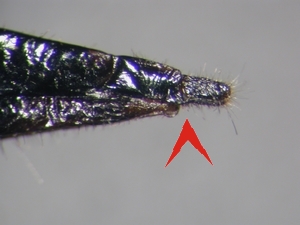g
Start g
- Robber flies of Germany -
[Key] Catalogue Comparisons Notes Terminology
key
- Subfamilies
- Asilinae
Aneomochtherus
Antipalus
Antiphrisson
Asilus
Dysmachus-gr.
Echthistus
Erax
Machimus-gr.
Neoitamus
Neomochtherus
Pamponerus
Philonicus
Rhadiurgus
Stilpnogaster
contents & layout
& copyright:
Fritz Geller-Grimm
Imprint
There are at least 33 Asilinae species occurring in Germany. This identification key is mainly based on publications by ENGEL (1930) and WEINBERG & BÄCHLI (1995). It is important to distinguish between the gender, i.e. the development of the female ovipositor is important for distinguishing between genera and the male terminalia are important to distinguish between species. Often, the diagnostic features of the included genera are not included to make the key easier to use because the Central European genera might be confusing for the non-specialist.
| 1 a. |
Length of metatarsus of mid leg reduced and somewhat widened [Fig. 1]
. . . . . . . . . . . .
|
| 1 b. |
Metatarsus of mid leg of usual length [Fig. 2]
. . . . . . . . . . . .
|
| 2 a. |
Face with shiny spot in the middle and only eye margins tomentose [Fig. 3]
. . . . . . . . . . . .
|
| 2 b. |
Face completely covered with pubescence or only with a very narrow shiny longitudinal stripe [Fig. 4]
. . . . . . . . . . . .
|
| 3 a. |
No lateral marginal bristles developed on tergites (discal bristles) [Fig. 5], [Fig. 6]
. . . . . . . . . . . .
|
| 3 b. |
Lateral marginal bristles on tergites (discal bristles) well-developed [Fig. 7], [Fig. 8]
. . . . . . . . . . . .
|
| 4 a. |
Base of wing milky white in males [Fig. 9]; upper margin of facial gibbosity distinctly angular [Fig. 10]
. . . . . . . . . . . .
|
| 4 b. |
Base of wing not different in colour from rest of wing [Fig. 11]; upper margin of facial gibbosity of usual shape, more rounded [Fig. 12]
. . . . . . . . . . . .
|
| 5 a. |
Posterior tergites yellow [Fig. 13]; face beard (mystax) yellow [Fig. 14]
. . . . . . . . . . . .
|
| 5 b. |
All tergites black [Fig. 15]; face beard (mystax) white in upper part and black in lower part [Fig. 16]
. . . . . . . . . . . .
|
| 6 a. |
Tergites and sternites black and shiny, except for somewhat tomentose hind margins of each segment [Fig. 17], [Fig. 18]
. . . . . . . . . . . .
|
| 6 b. |
At least tergites tomentose [Fig. 19], [Fig. 20]
. . . . . . . . . . . .
|
| 7 a. |
Postocular bristles (occipital bristles) long and sharply, bent anteriorly in right-angled medially [Fig. 21]; at least two last segments anterior to ovipositor shiny black [Fig. 22]
. . . . . . . . . . . .
|
| 7 b. |
Postocular bristles (occipital bristles) either weakly bent or straight [Fig. 23]; two last segments anterior to ovipositor tomentose [Fig. 24]
. . . . . . . . . . . .
|
| 8 a. |
Dorsocentral and acrostichal bristles weakly developed or entirely lacking anterior to transverse suture [Fig. 25]; facial gibbosity restricted to lower third of face [Fig. 26]
. . . . . . . . . . . .
|
| 8 b. |
Dorsocentral and acrostichal bristles well-developed anterior to transverse suture [Fig. 27]; facial gibbosity well-developed (at least occupying lower half of face) [Fig. 28]
. . . . . . . . . . . .
|
| 9 a. |
Legs completely black [Fig. 29]; ovipositor with erect spines [Fig. 30]
. . . . . . . . . . . .
|
| 9 b. |
At least tibiae yellowish or red [Fig. 31]; ovipositor without such erect spines [Fig. 32]
. . . . . . . . . . . .
|
| 10 a. |
Sternites mainly shiny [Fig. 33]
. . . . . . . . . . . .
|
| 10 b. |
Sternites mainly tomentose [Fig. 34]
. . . . . . . . . . . .
|
| 11 a. |
Area around cross-veins of wing darkened [Fig. 35]; postpedicel (3rd antennal segment) elongated [Fig. 36]
. . . . . . . . . . . .
|
| 11 b. |
Area around cross-veins not particularly darkened [Fig. 37]; postpedicel (3rd antennal segment) of usual length and shape [Fig. 38]
. . . . . . . . . . . .
|
| 12 a. |
Ovipositors broad and short (wider than long), ventrally with densely arranged yellow hairs [Fig. 39], [Fig. 40]
. . . . . . . . . . . .
|
| 12 b. |
Ovipositor laterally compressed (longer than wide) [Fig. 41], [Fig. 42]
. . . . . . . . . . . .
|
| 13 a. |
Cerci of ovipositor enclosed by last tergite [Fig. 43], [Fig. 44]
. . . . . . . . . . . .
[Didysmachus, Dysmachus, Eutomlus] |
| 13 b. |
Cerci free, not surrounded by last tergite [Fig. 45], [Fig. 46]
. . . . . . . . . . . .
[Machimus, Neoepitriptus, Tolmerus] |
